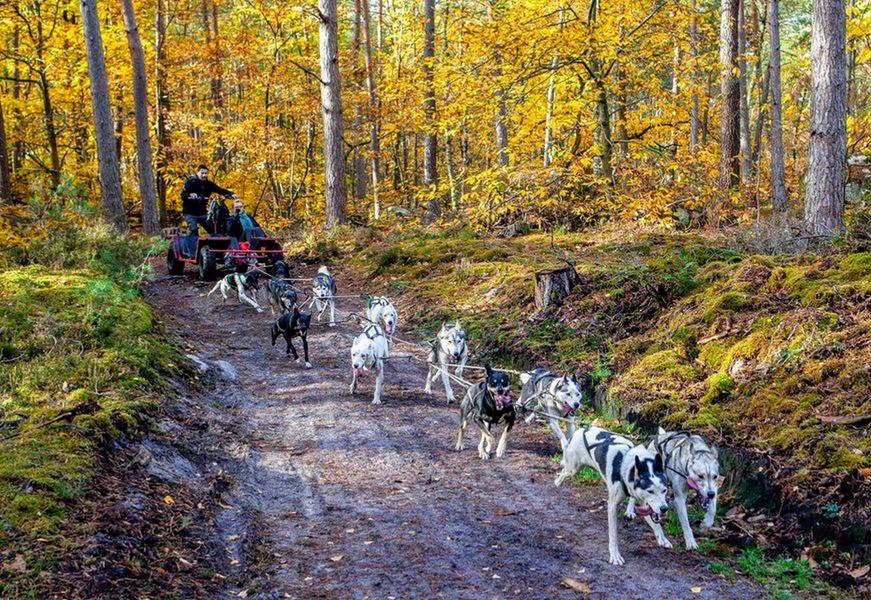Today
A source of inspiration and the ideal getaway
The originality of the forest of Fontainebleau lies in the presence of sand, plateaux and sandstone boulders and rocks, which bear witness to its geological history. They gave rise to the picturesque landscapes which lend it such special character and which inspired artists.
From the mid-nineteenth centuries, painters, writers, film-makers and photographers fell in love with the forest of Fontainebleau and forged its reputation.
It was at this period that the visionary Claude François Denecourt, who was enchanted by the beauty of the forest, invented nature tourism: in 1842, he created the world’s first marked rambling trails, called sentiers bleus, or “blue pathways”. His work was continued by his disciple, Colinet. They created a total of 150 kilometres of walks.
Viewed until then as an inhospitable environment, the forest became a popular destination for walkers thanks to the arrival of the railway and the publication of the first ramblers’ guides, written by Denecourt (1839). Nature tourism was born and developed throughout France from Fontainebleau.
After that, it was the turn of cyclists and horse-riders to occupy the forest, not to mention rock-climbers, who traced out numerous climbing courses during the early twentieth century. These attracted the pioneers of mountaineering, including internationally renowned rock-climbers (Casella, Prestat, Wehrlin, etc.), who came to train in preparation for their attempts to conquer the Himalayas.
This was the period when the young film-making industry was beginning to abandon studio sets in favour of more natural settings, which they found on a number of occasions in the forest of Fontainebleau. Since then, the film industry has made frequent use of the forest (Cyrano de Bergerac, Brotherhood of the Wolf, Asterix and Obelix Meet Cleopatra, etc.), inspired by it just every bit as much as the writers and artists.
An outstanding natural environment to protect at all costs
The forest of Fontainebleau is home to an outstanding living, natural heritage. It offers a patchwork of landscapes and forest ecosystems, resulting both from its vegetation (moorland and timber forest), its relief (hills, valleys and gorges), its climate (Atlantic, continental and even Mediterranean influences), and its geology (ranging from fine sand to sandstone rocks and limestone plateaux).
Consequently, the forest of Fontainebleau is unlike any other forest. It is an emblematic place with a rich past and a history-steeped heritage which must be protected, but also left open for its multiple uses.
From the creation of the artist reserves in 1861 up to the present day, numerous conservation measures have been implemented to protect these spaces and maintain their habitats.
Today, the forest is protected by numerous legal and environmental measures. The forest enjoys “protected forest” status, is a listed UNESCO biosphere reserve, a classified Natura 2000 site and, in the case of the national forest, a listed site of which the planning document is approved by the Ministries of the Environment and Agriculture. All these measures ensure lasting protection for the woodland and safeguard its outstanding ecosystems, biodiversity and landscapes, thanks not least to the creation of the Integral Biological Reserves (1,062 hectares) and Managed Biological Reserves (1,305 hectares).

The different sports and leisure activities that have been practised here for decades (walks, rambles, orienteering, cycling, mountain biking, rock-climbing, riding, golf, hunting) are practised side by side and with respect for the environment thanks to the agreements and codes of conduct enacted by sports federations and associations in coordination with the National Forestry Office (ONF).
Sled dogs discovery ("baptême") with Evasion Canine
Fontainebleau

In the prestigious setting of the forest of Fontainebleau, make your dreams come true and discover the sled dogs actvities at the heart of nature !
